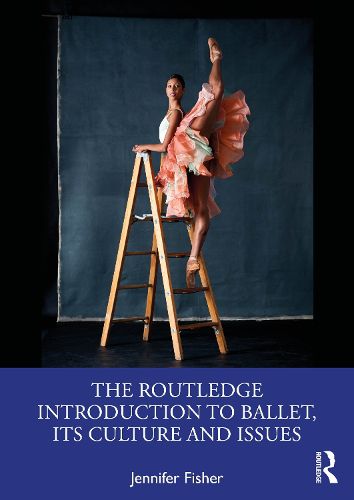Readings Newsletter
Become a Readings Member to make your shopping experience even easier.
Sign in or sign up for free!
You’re not far away from qualifying for FREE standard shipping within Australia
You’ve qualified for FREE standard shipping within Australia
The cart is loading…






As an introduction to ballet's history, culture, and meanings, this book draws on the latest ballet scholarship to describe the trajectory of a dance form that has risen to global ubiquity and benefited from many diverse influences along the way.
Organized around themes, the book explains how the manners, style, and hierarchies of ballet became such a strong part of its DNA. It addresses the origins of ballet's aristocratic vocabulary and the ways in which it may be interpreted now, incorporating meanings that range from the aesthetic to the spiritual and the political. The Routledge Introduction to Ballet, its Culture and Issues explores how dancers and audiences have experienced ballet, how popular films have represented it, and who has been excluded and how that could change. The chapters highlight the people, institutions, and works that helped to establish ballet's reputation, while also uncovering lesser-known influences and new ways of interpreting ballet. Lists of research resources-further readings, documentary films, and dance feature films-offer starting points for further avenues of learning. This book's central premise is that all dance reflects the culture in which it develops and is capable of embodying and disseminating new ideas.
This is the definitive introduction for anyone drawn to ballet or seeking to understand it, and those looking to develop a thorough understanding of how ballet developed, the cultures that formed it, and what it can mean for today's audiences, artists, and scholars.
$9.00 standard shipping within Australia
FREE standard shipping within Australia for orders over $100.00
Express & International shipping calculated at checkout
As an introduction to ballet's history, culture, and meanings, this book draws on the latest ballet scholarship to describe the trajectory of a dance form that has risen to global ubiquity and benefited from many diverse influences along the way.
Organized around themes, the book explains how the manners, style, and hierarchies of ballet became such a strong part of its DNA. It addresses the origins of ballet's aristocratic vocabulary and the ways in which it may be interpreted now, incorporating meanings that range from the aesthetic to the spiritual and the political. The Routledge Introduction to Ballet, its Culture and Issues explores how dancers and audiences have experienced ballet, how popular films have represented it, and who has been excluded and how that could change. The chapters highlight the people, institutions, and works that helped to establish ballet's reputation, while also uncovering lesser-known influences and new ways of interpreting ballet. Lists of research resources-further readings, documentary films, and dance feature films-offer starting points for further avenues of learning. This book's central premise is that all dance reflects the culture in which it develops and is capable of embodying and disseminating new ideas.
This is the definitive introduction for anyone drawn to ballet or seeking to understand it, and those looking to develop a thorough understanding of how ballet developed, the cultures that formed it, and what it can mean for today's audiences, artists, and scholars.